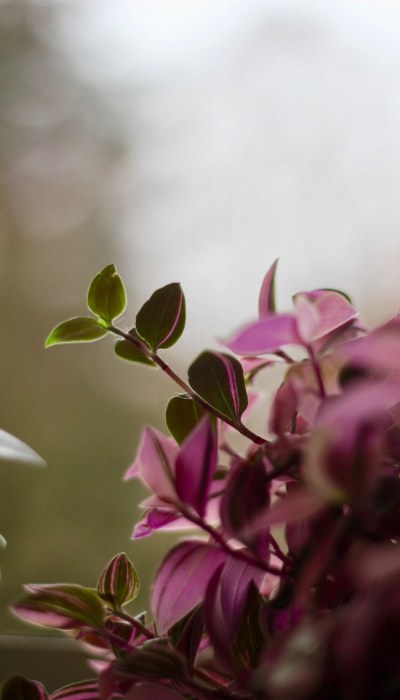Voodoo lilies are large, tropical plants that are ideal for growing outdoors in warm climates, like Florida and Hawaii. If you live in a warmer climate and have some outdoor space, you can grow this attractive plant with little effort and without the need to fuss over it much once it’s established. However, if you live in an area where temperatures get too cold to grow Voodoo Lily outdoors, you can grow it inside your home year-round without any special equipment or lighting requirements. Here’s how to grow voodoo lily from planting through flowers and seeds.

Why Is This Plant Called Voodoo Lily?
The Voodoo lily is an exotic plant that grows well in tropical climates. It also happens to have a striking appearance, with its large, spotted leaves and beautiful purple blooms. The plant is hardy, but there are still some things you should know before planting your own. Here are some tips on how to grow voodoo lilies.
- These plants can only be grown outside in warmer climates, so if you live somewhere with cool winters or high humidity, it’s best not to try.
- They prefer sandy soil and can thrive even without regular watering as long as the pot drains well.
- Even though they can take care of themselves outdoors during their warm season, they need plenty of shade inside during their winter hibernation.
- When planting them outside for the summer months (or bringing them indoors), make sure that they get at least six hours of sun per day – more if possible!
- If planted outside they will bloom from spring through fall; inside they will bloom all year long!
- After they’ve bloomed, cut off any dead flowers, then trim away the old leaf clumps around the base of the plant.
- You can use feed every couple of weeks with liquid fertilizer mixed into water or diluted fish emulsion to encourage new growth.
- Don’t forget to leave these plants outside when temperatures start getting cold and bring them back inside when temps start warming up again!
- If you’re looking for something interesting but easy-to-care-for, give these beauties a shot next time you’re shopping at your local garden center!
Where Does it Grow Naturally?

Native to the Americas, Voodoo Lilies are hardy plants that grow in moist soil. In the wild, they can be found growing in wet forests in southeastern North America from Texas to Florida; New York southward through eastern Pennsylvania; and southward from Missouri through Mississippi. What do They Look Like?: The dark red lily-like blooms of the Voodoo Lily stand out against a green background of long strap-like leaves. Voodoo Lilies have deep purple stems with thin, sharp thorns that can pierce skin if handled carelessly. The plant is also known as devil’s trumpet, devil’s cabbage, or phantom orchid.
Tips on Growing Voodoo Lilies in the Garden, Containers, or Pots
- Voodoo lilies grow best in moist, rich soil with lots of organic matter. They are not picky about the type of soil, just make sure it is well drained. If you are growing them in containers or pots, amend the potting soil with compost.
- The plants need full sun for at least six hours a day and like their roots cool so don’t overwater them or put them in a hot location where they will get direct sun.
- Feeding can be tricky because they have such large leaves that block access to the topsoil but try to fertilize every three months or so during spring and summer when the plant is actively growing.
- Voodoo Lilies are native to the southeastern United States and although they can survive cooler temperatures than most bulbs, it is best to give them winter protection if temperatures go below 50 degrees Fahrenheit.
- To propagate new plants, cut off blooming stems after flowering and allow them to dry on the stem for two weeks before planting.
- Be careful not to damage foliage by planting too deeply as these deep-rooted plants resent being disturbed from their original site.
- Cut off any diseased leaves and discard them in a safe place away from your garden area.
- Mulch around the base of your voodoo lily to keep the roots cool and protect them from drought, diseases, and weeds.
- Use only sterile potting soil or garden soils mixed with compost as these plants are prone to bacterial leaf spot disease caused by poor drainage of excess moisture on leaf surfaces.
- When purchasing voodoo lily rhizomes (bulbs), look for rhizomes that show signs of growth on the outside, meaning it is healthy enough to sprout into a new plant!
- Deadhead flowers regularly for maximum flower production throughout the season!
Where Can I Get Some Seeds or Plants?

To start with, VooDoo Lily plant seeds can be purchased online. You can also purchase a plant from your local nursery. The plant is very drought tolerant, so it doesn’t need much watering. Just make sure that the soil isn’t completely dry before you water it again. The flowers will last for a few months before they wither away and are replaced by new blooms. If you live in an area with colder winters, keep in mind that these plants are not frost-resistant.
In areas with cold winters, place your plants indoors during the winter months or bring them inside during the evening when temperatures dip below 50 degrees Fahrenheit. VooDoo Lilies love the sun. Make sure they receive plenty of direct sunlight. During hot summer days, move them out of the heat into a shaded area where they can enjoy some fresh air. Be careful if you have small children or pets around your voodoo lily because this plant is poisonous!
Conclusion
A little-known fact about Voodoo lilies is that they are not actually a true species of lily, but rather hybrids of Lilium longiflorum and Lilium brownie. This means that they are closely related to tiger lilies and Easter lilies, but have slightly different flowers. They are also less cold tolerant than their cousins. The best time to plant voodoo lilies is in the fall or winter when soil temperatures are lower, in areas with mild winters. If you live in a warmer climate, you can still grow these plants as an annual by planting them outside during the cooler months.
Also, check out the latest articles “Abelia plant” and “Wandering jew plant“
Hi I’m Bilal Malik, a digital marketing and blogging expert holding years of experience.










